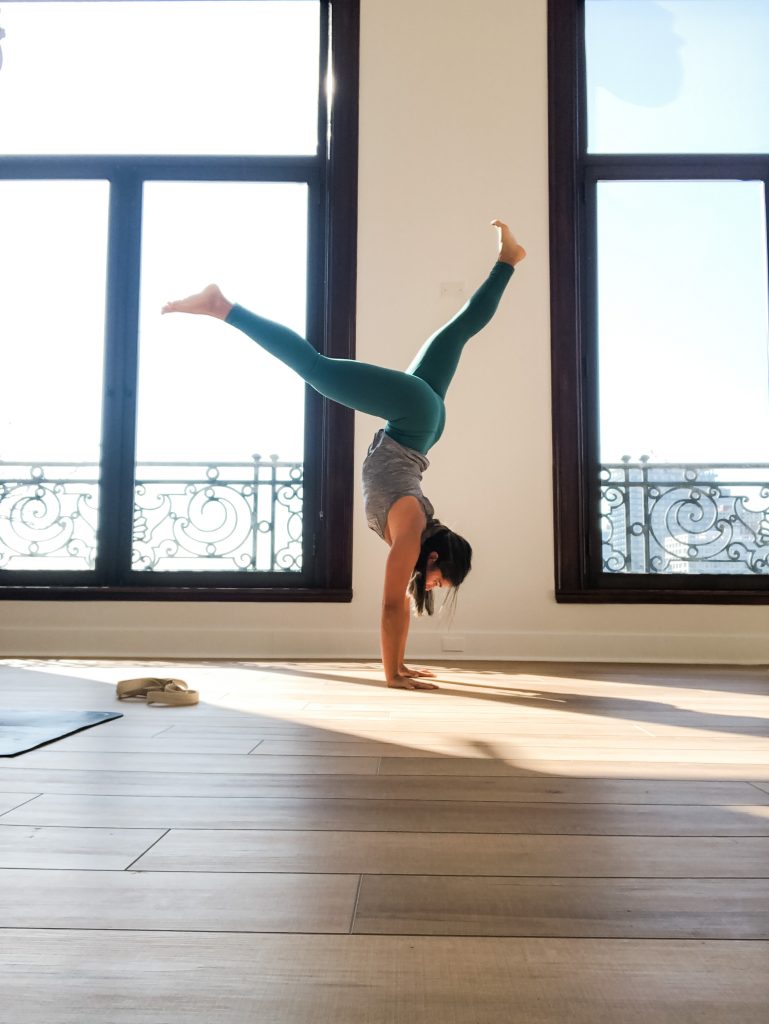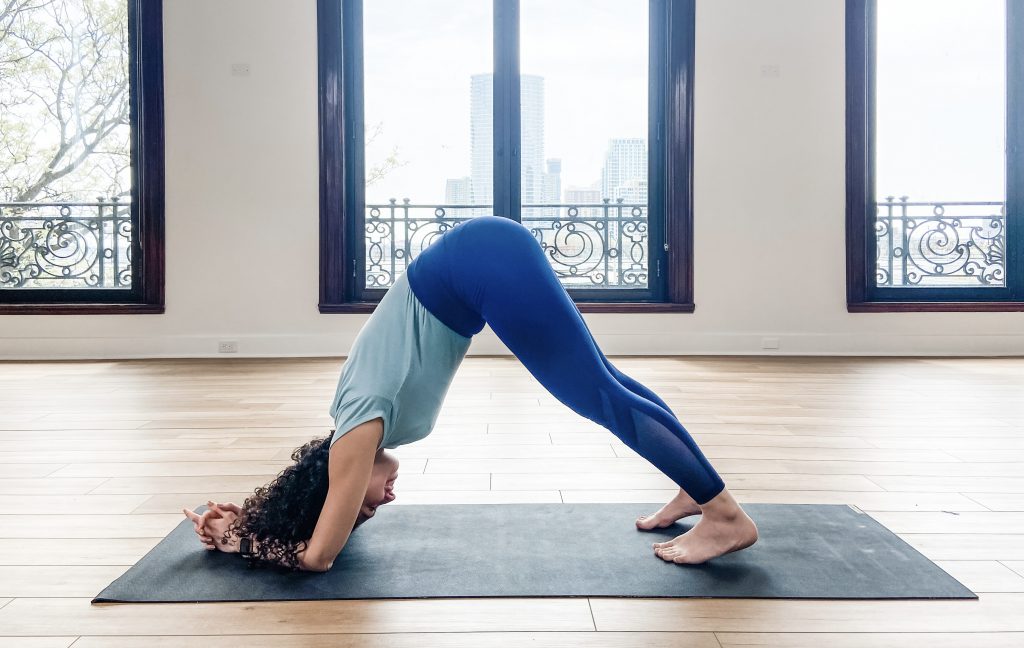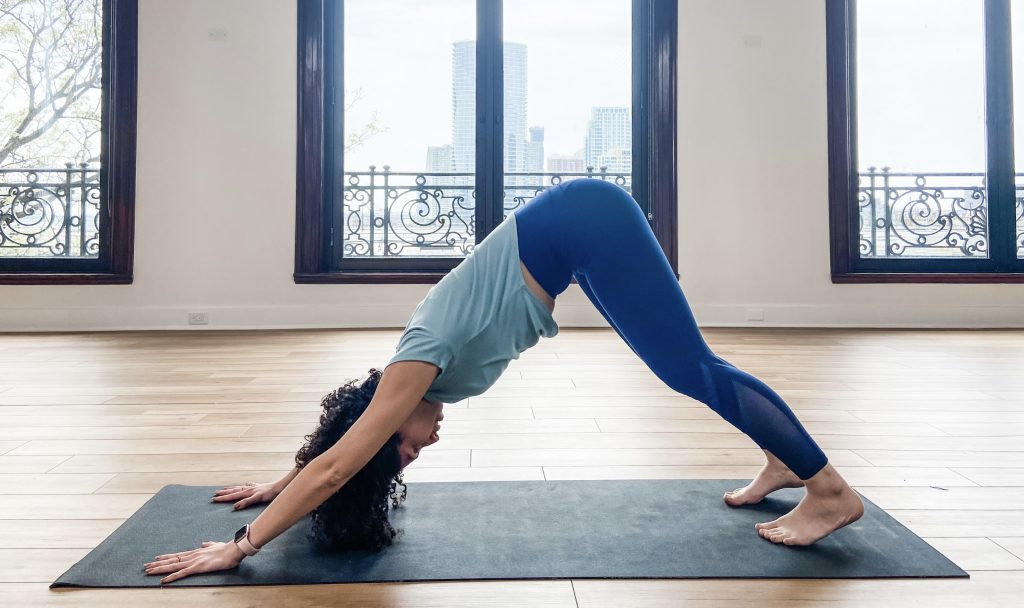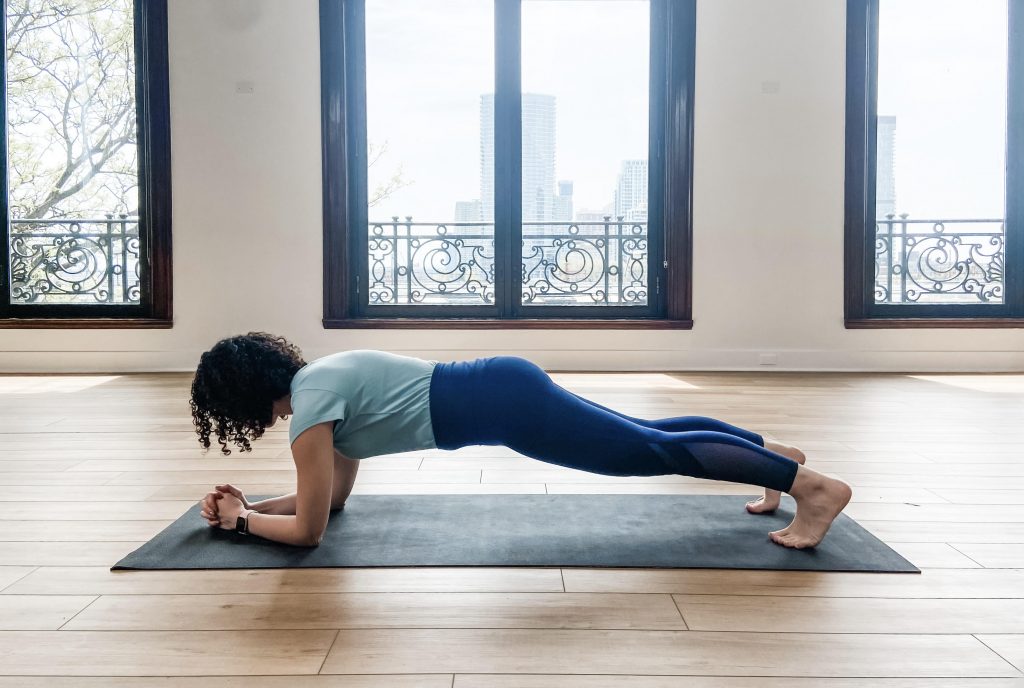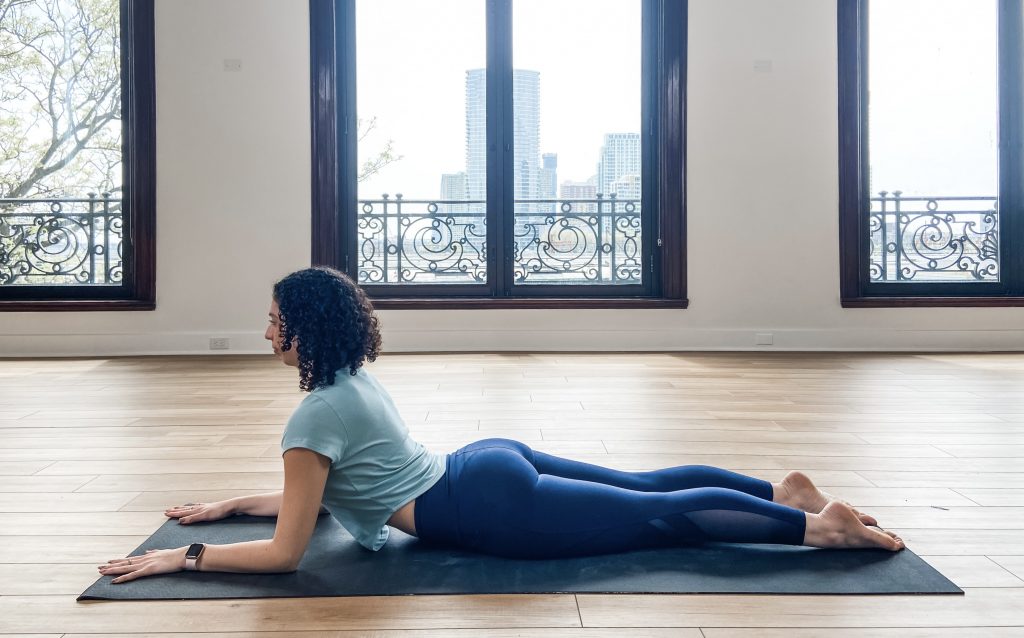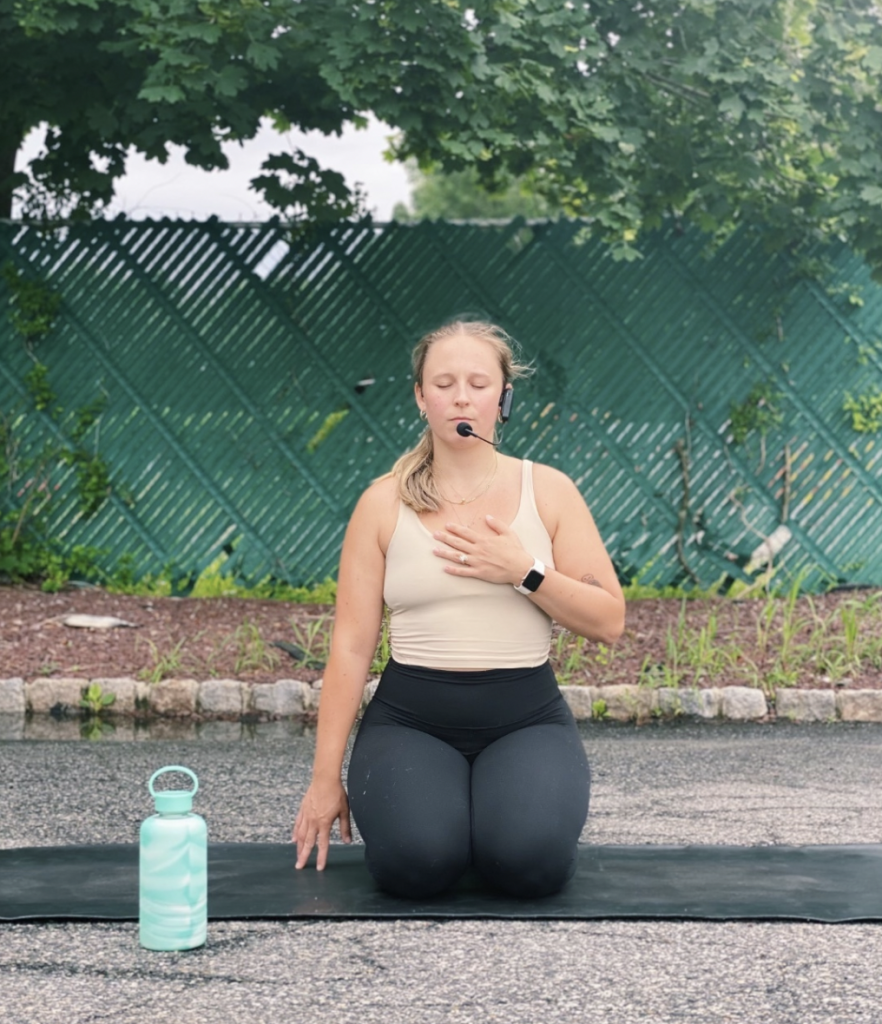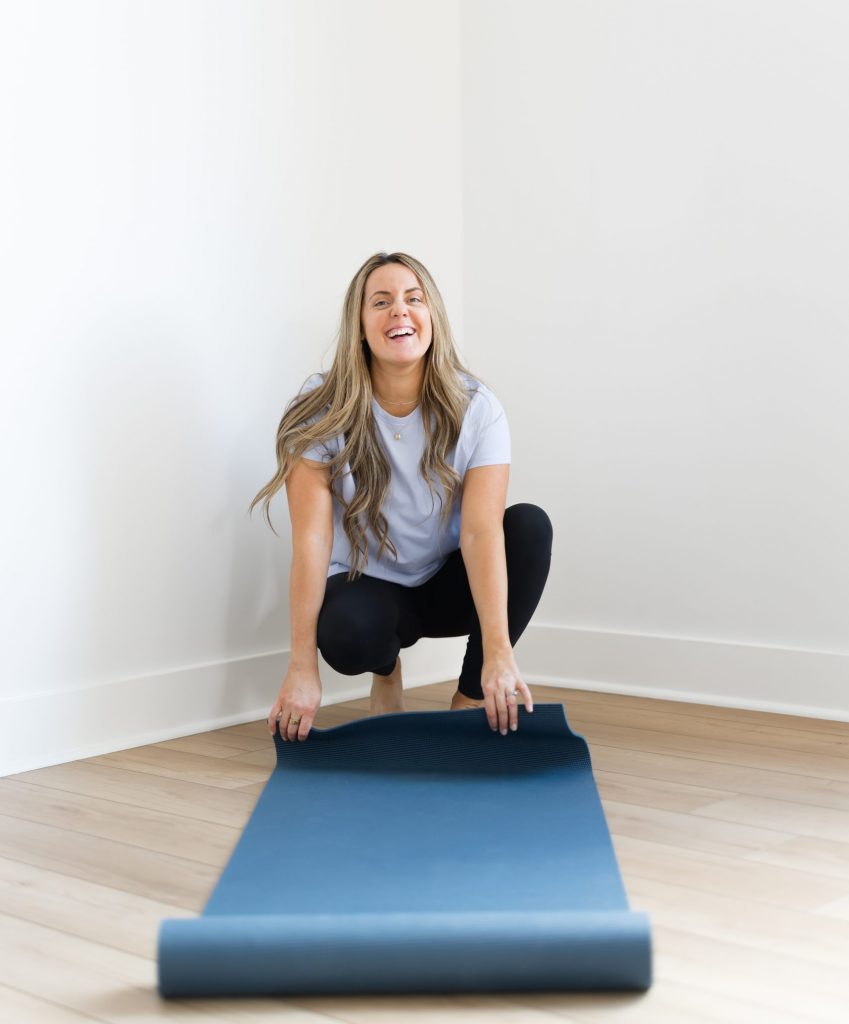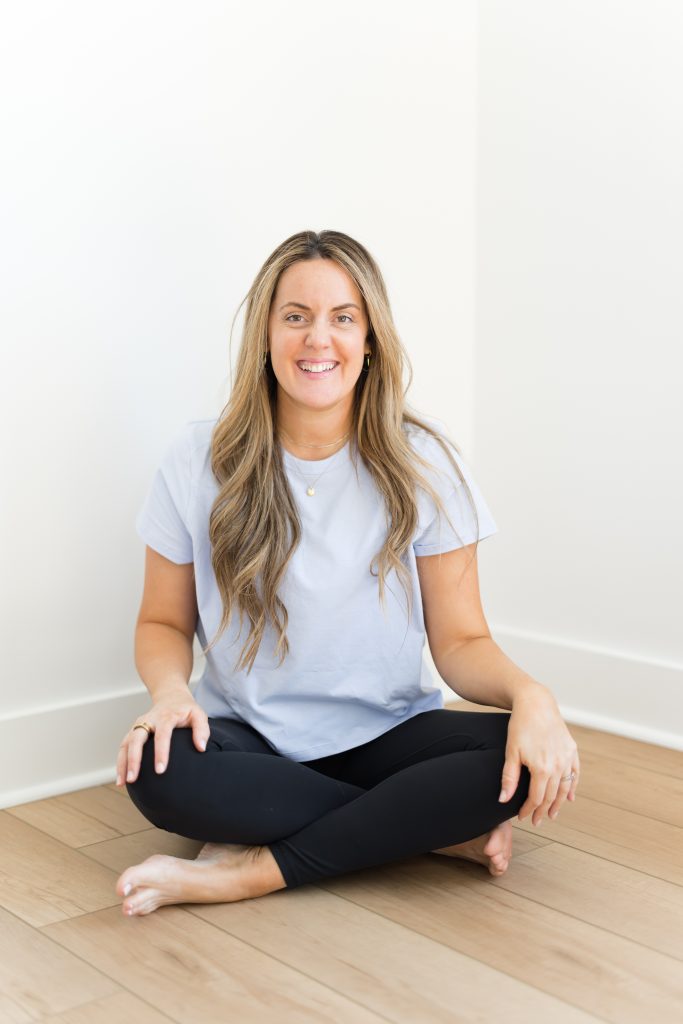
I was reading an article the other day that asked this question and as I sat there contemplating my answer I realized that while there are probably hundreds of things I love about this practice, what really made me fall in love with it was its focus on the breath as a tool to connect inwards.
I took my first yoga class kind of by accident during a time in my life when everything felt a little out of control. I was in my early 20s and was recovering from a collapsed lung that quite literally made it feel difficult to breathe at times as I was navigating all of the issues that resulted from that health problem.
While working to get myself back into shape following that issue, I was going to a local gym and the Zumba class was totally full, so I decided to try out the yoga class instead.
“I was a total disaster. I could barely tell my left foot from my right foot much less try and hold a plank pose or flow in a downward facing dog.”
But then something special happened when I got to savasana… I laid there on my mat, eyes closed, body relaxed, and I just breathed. Soon enough, that breath made me feel a sense of peace and freedom that I hadn’t felt in a long time. Then suddenly, the practice transformed something that had been a cause for chaos in my life and reframed it into a tool for connection and calm.
Everything changed in my life after that class. Not immediately, but little by little, day by day. I began to realize that I could make choices to bring myself back to a place of feeling whole again. That I could learn to control my breath and use it to connect to my body again – a body I had felt betrayed me when I needed it most.
“Yoga gave me the gift of seeing the world through a more hopeful lens, even when things are hard.”
Over the years as I became a more serious student of yoga, then a yoga teacher trainee, and eventually a yoga teacher I’ve thought about why the focus on the breath makes yoga so special. I’m sure there are many reasons, but here’s the one that has made the most sense to me… The breath is the one system of the body that lies in both our conscious and subconscious planes.
There are things that we must consciously think about in order to do – walking, eating, dancing, talking. These tasks require our mind to be engaged and make decisions about using our bodies in this way. And then there are things our subconscious controls. The beating of our heart, the digesting of our food, the release of hormones in our bodily systems. We don’t have to think about these things in order to make sure they happen, they just do.
Our breath lies in both planes.
When you sleep at night you don’t have to think about breathing. You go to bed knowing that you’ll continue to inhale and exhale and repeat. BUT – you can also control your breath. You can breath in deeply and hold it. You can exhale it out forcefully. You can manipulate your breath to achieve different results.
To me, this is where the magic lies. The breath is literally the bridge between the two parts of who we are because it connects our conscious and unconscious minds and allows us to be whole. Because the practice of yoga teaches us how to use our breath effectively, it’s really teaching us how to connect to the truest parts of ourselves.
Yoga made me fall back in love with myself and the world around me…and the breath made me fall in love with yoga.
For that, I’ll be forever grateful.


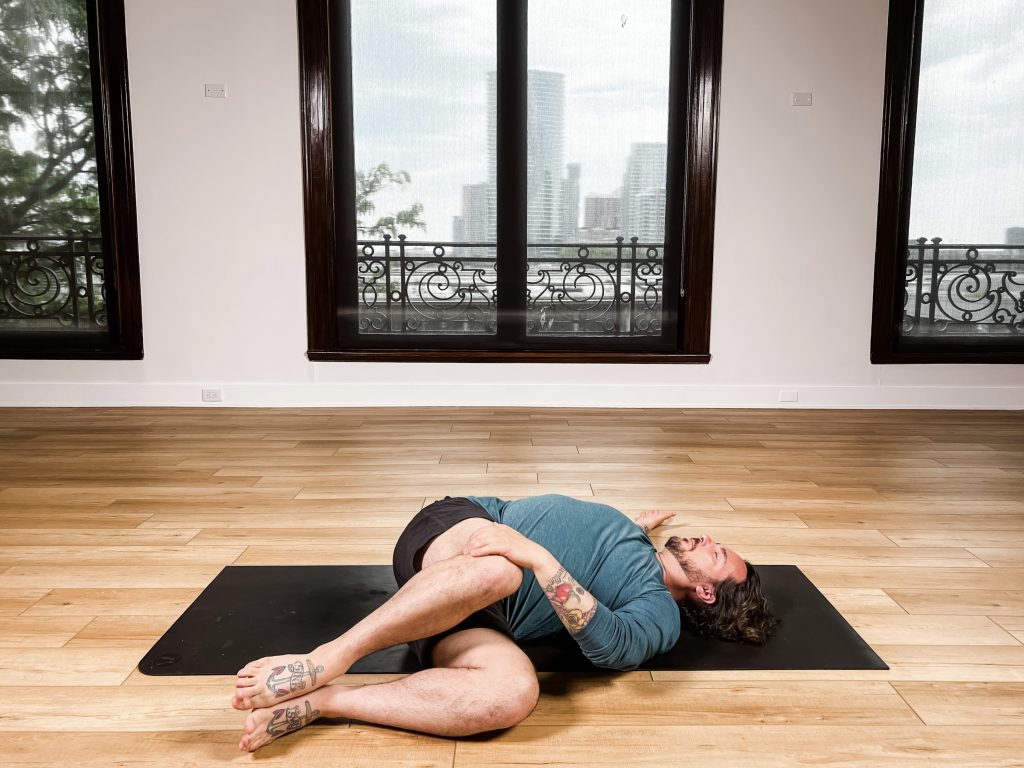
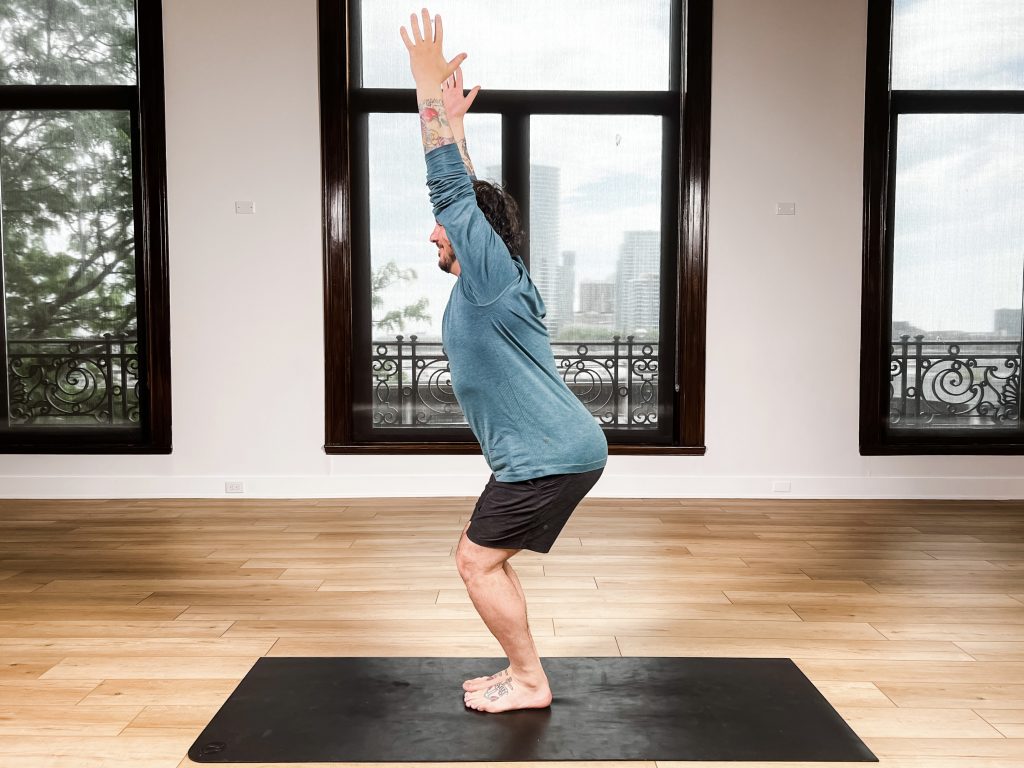
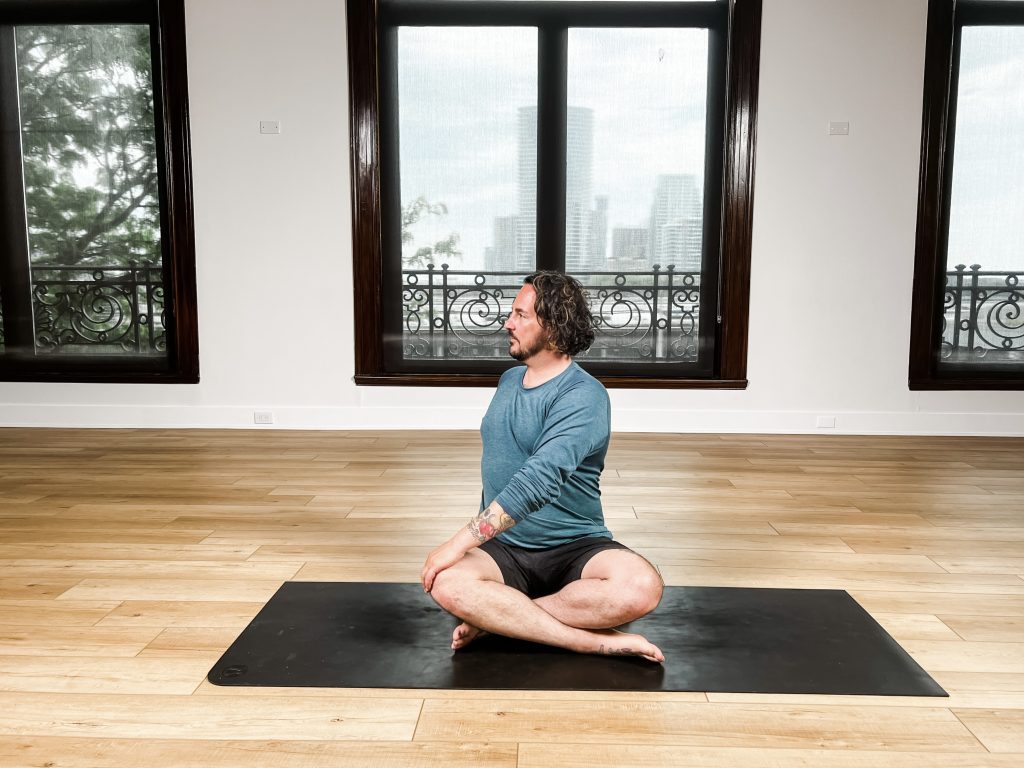
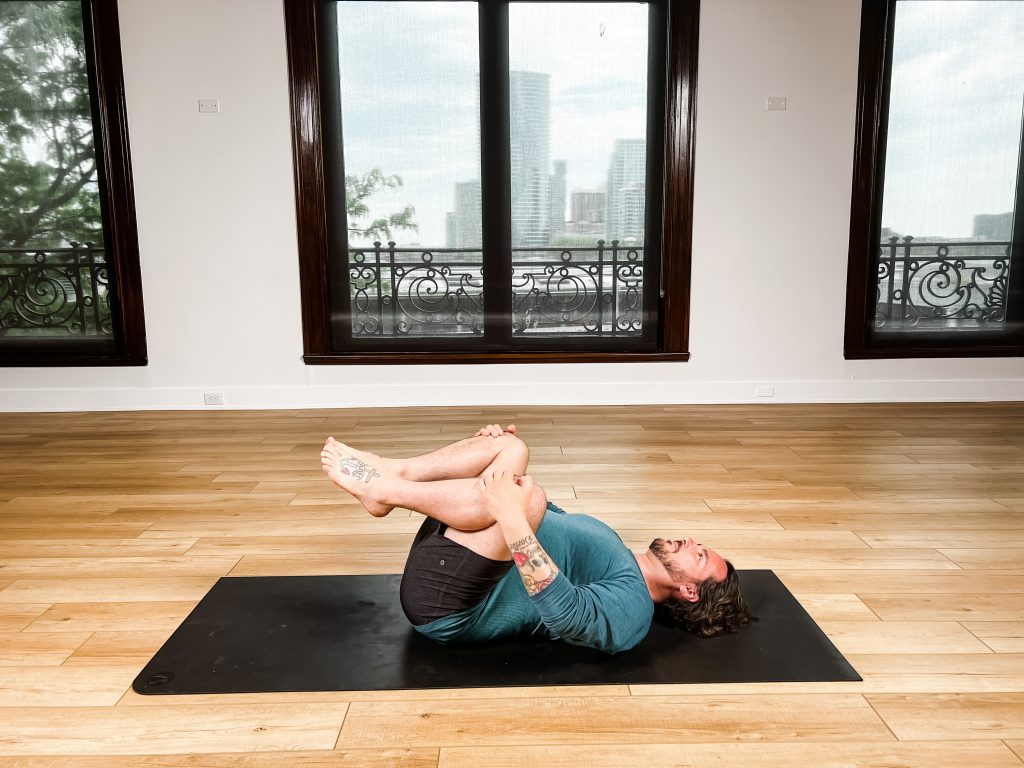
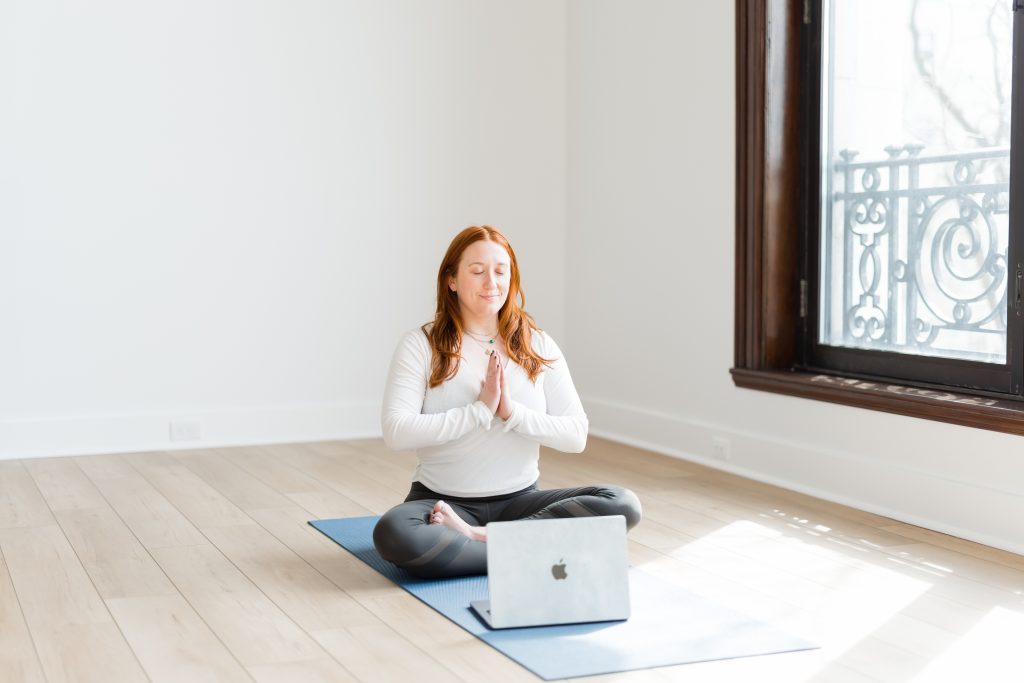

 – written by Lisa Bermudez
– written by Lisa Bermudez 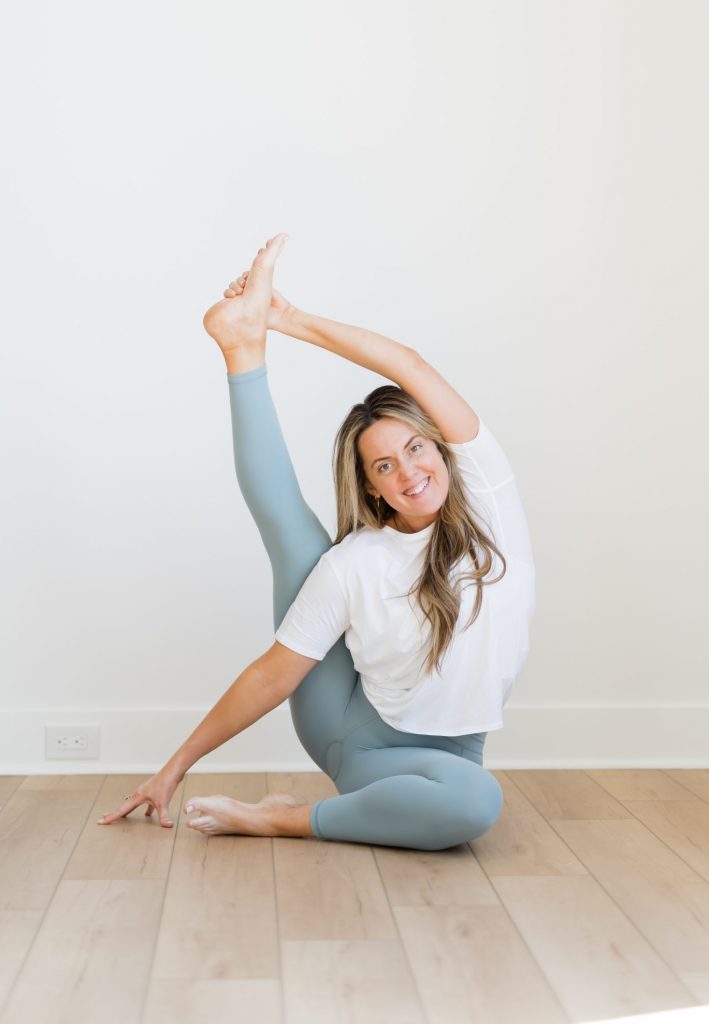
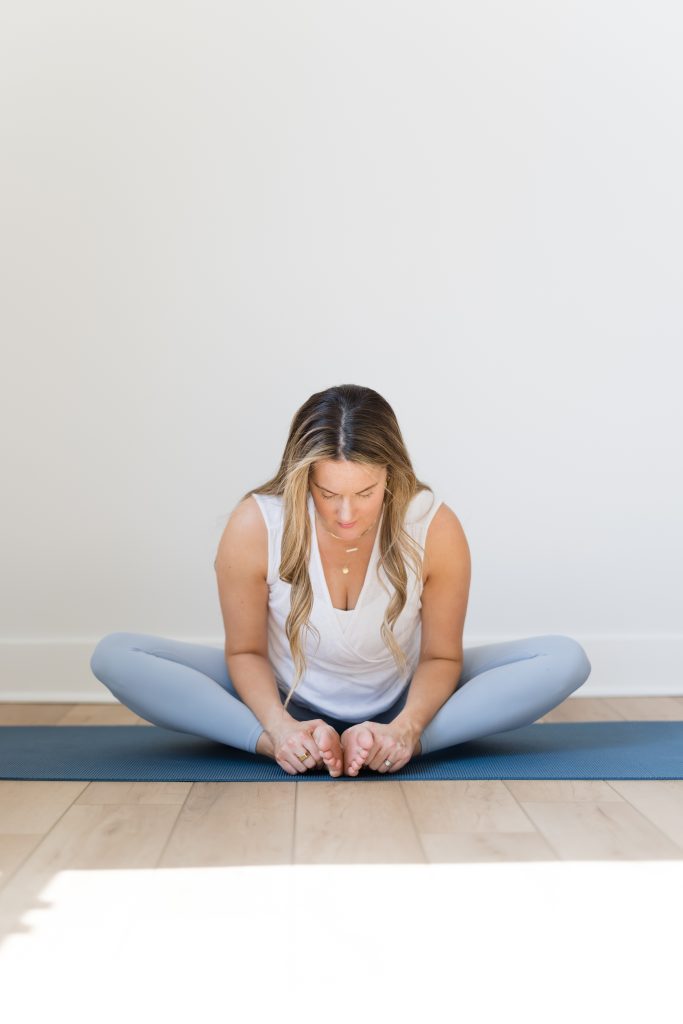
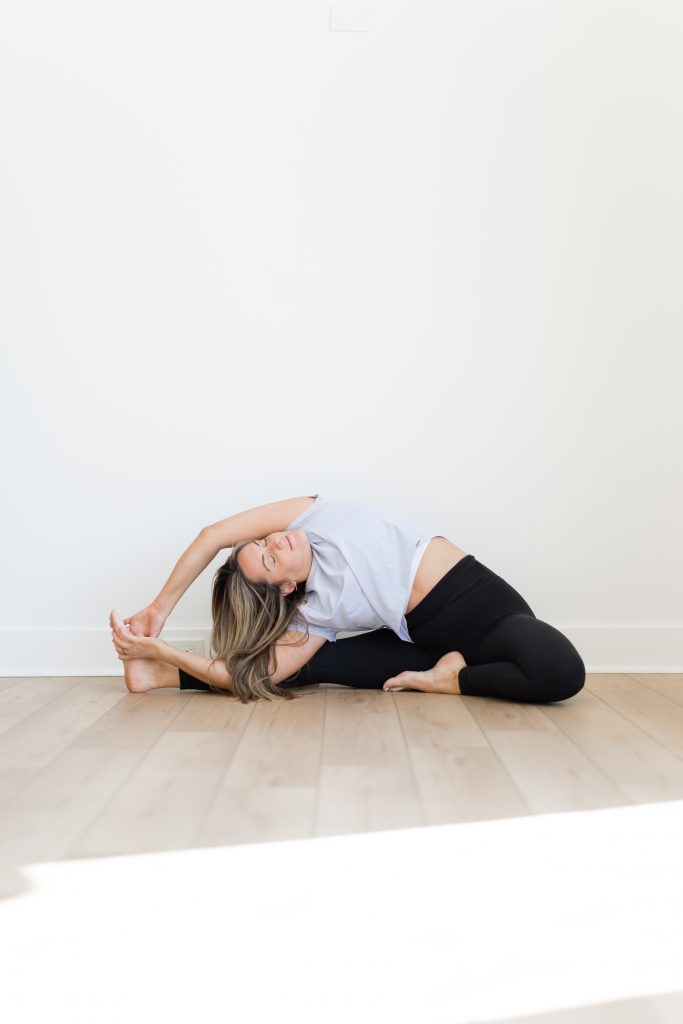
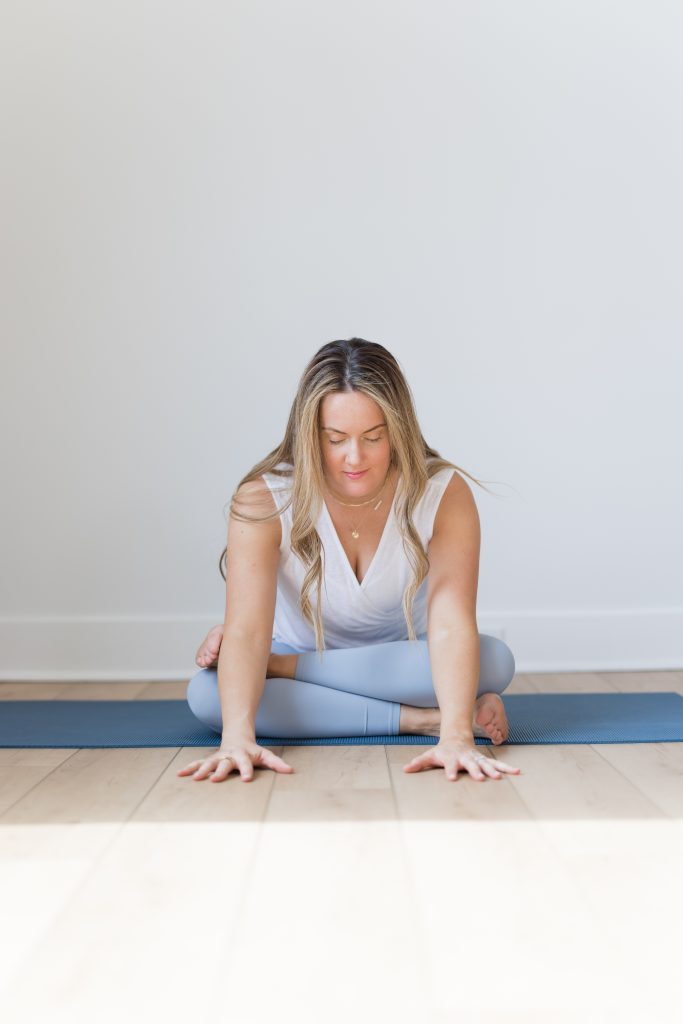
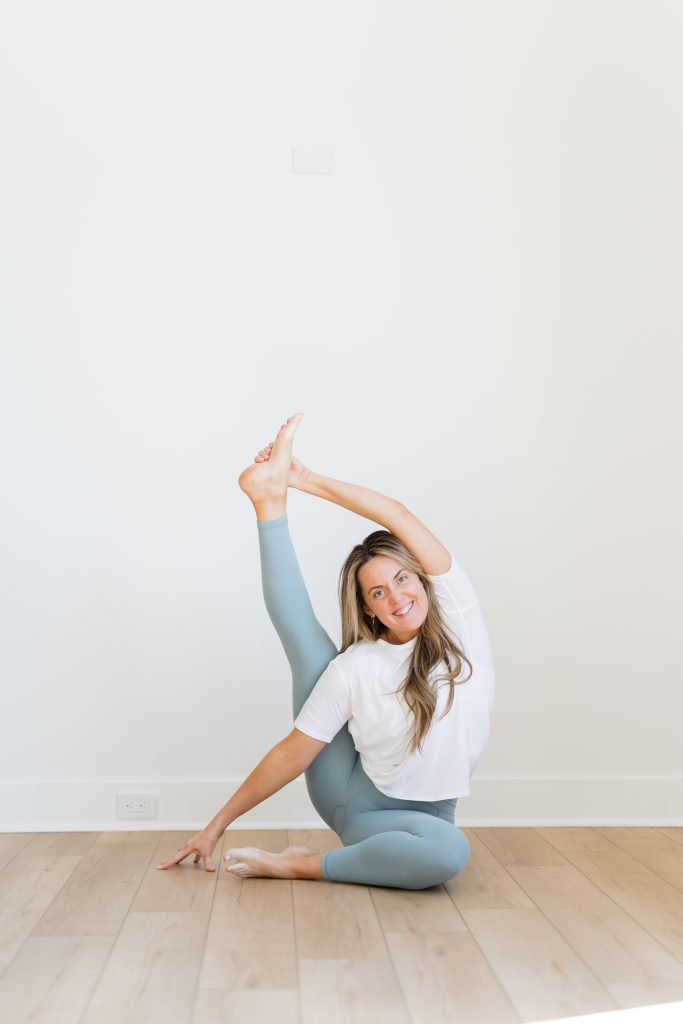
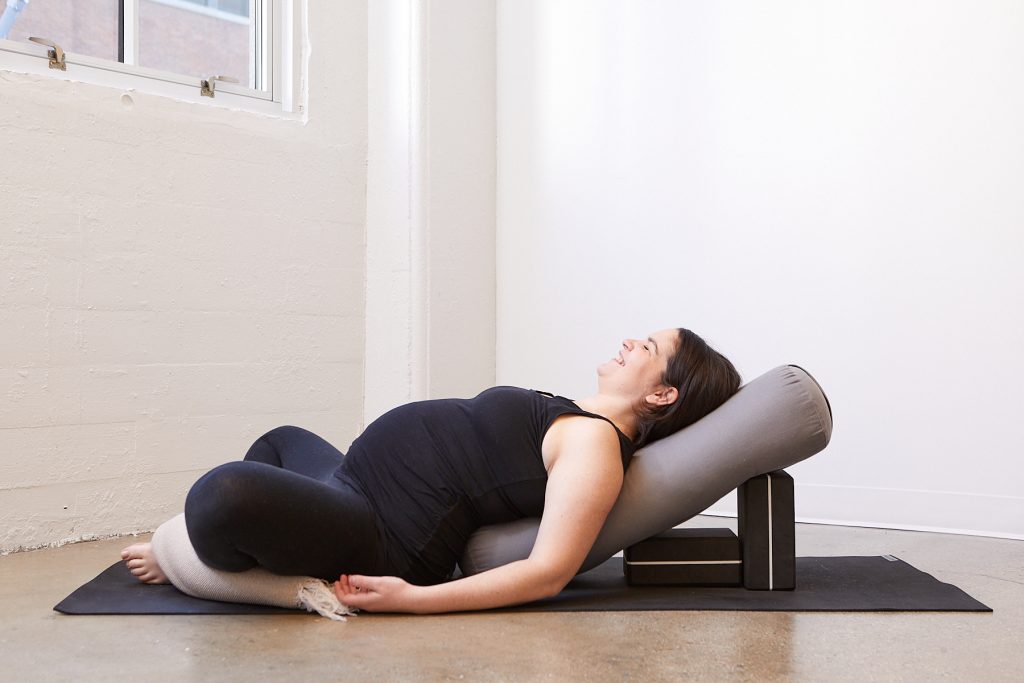
 It is beneficial to distinguish two types of prenatal students: those who have been practicing yoga consistently for a length of time prior to conception, and have continued to practice during their pregnancy, and those who are new to yoga, or are returning to yoga prenatally after a long absence.
It is beneficial to distinguish two types of prenatal students: those who have been practicing yoga consistently for a length of time prior to conception, and have continued to practice during their pregnancy, and those who are new to yoga, or are returning to yoga prenatally after a long absence. Maintaining the aforementioned bend in the knees will greatly enhance mobility and flexibility in your prenatal students. Forward folds, when practiced with proper foot alignment and deeply bent knees, can be safely practiced during pregnancy, creating much needed length in the back of the body. Modified Sun Salutes can be practiced if the feet are in proper alignment and the knees are softened, as can squats, which prepares the legs and pelvic floor for the rigors of childbirth. Keeping the knees bent insures proper blood flow between the lower and upper regions of the body, and lessens the likelihood of sciatic nerve pain or lightheadedness.
Maintaining the aforementioned bend in the knees will greatly enhance mobility and flexibility in your prenatal students. Forward folds, when practiced with proper foot alignment and deeply bent knees, can be safely practiced during pregnancy, creating much needed length in the back of the body. Modified Sun Salutes can be practiced if the feet are in proper alignment and the knees are softened, as can squats, which prepares the legs and pelvic floor for the rigors of childbirth. Keeping the knees bent insures proper blood flow between the lower and upper regions of the body, and lessens the likelihood of sciatic nerve pain or lightheadedness.